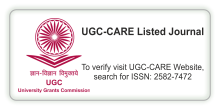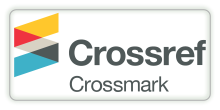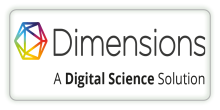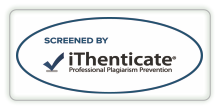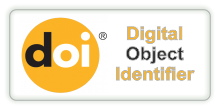VIRTUAL REALITY AND INCLUSIVE EDUCATION: A FRAMEWORK FOR TRANSFORMATION
DOI:
https://doi.org/10.29121/shodhkosh.v4.i2.2023.5501Keywords:
Inclusive Education, Virtual Reality, Special Educational Needs, Universal Design for Learning, Constructivism, Experiential Learning, Samr Model, Educational TechnologyAbstract [English]
Inclusive education is increasingly recognized as a cornerstone of equitable learning, yet traditional pedagogical methods often fail to accommodate the diverse needs of all learners especially those with special educational needs (SEN). This paper explores the transformative role of Virtual Reality (VR) in addressing these challenges by offering immersive, interactive, and adaptable learning experiences. Framed within Constructivist Learning Theory, Experiential Learning Theory, and the SAMR Model, the study critically examines how VR fosters engagement, supports differentiated instruction, and enhances both cognitive and emotional development. It categorizes VR modalities non-immersive, semi-immersive, fully immersive, and mixed reality and aligns these with practical applications for inclusive learning environments. Platforms such as ClassVR, Floreo, Labster, and CoSpaces Edu are examined for their efficacy in promoting empathy, executive functioning, and life skills development among diverse learners. The paper also addresses critical ethical and logistical considerations, including equitable access, educator readiness, health and safety, and data privacy. Ultimately, this study highlight the potential of VR to serve as a powerful enabler of inclusive education when implemented with intentionality, accessibility, and pedagogical integrity.
References
Al-Azawei, A., Serenelli, F., & Lundqvist, K. (2016). Universal design for learning (UDL): A content analysis of peer-reviewed journal papers from 2012 to 2015. Journal of the Scholarship of Teaching and Learning, 16(3), 39–56. https://doi.org/10.14434/josotl.v16i3.19295 DOI: https://doi.org/10.14434/josotl.v16i3.19295
Cooper, M., & Durlach, P. J. (2013). Virtual reality training environments for students with disabilities: Opportunities and challenges. Journal of Educational Technology Systems, 42(2), 139–154. https://doi.org/10.2190/ET.42.2.e DOI: https://doi.org/10.2190/ET.42.2.e
Hamilton, D., McKechnie, J., Edgerton, E., & Wilson, C. (2021). Immersive virtual reality as a pedagogical tool in education: A systematic literature review of quantitative learning outcomes and experimental design. Journal of Computers & Education, 162, 104096. https://doi.org/10.1016/j.compedu.2020.104096 DOI: https://doi.org/10.1016/j.compedu.2020.104096
Kolb, D. A. (1984). Experiential learning: Experience as the source of learning and development. Prentice Hall.
Lindgren, R., & Johnson-Glenberg, M. (2013). Emboldened by embodiment: Six precepts for research on embodied learning and mixed reality. Educational Researcher, 42(8), 445–452. https://doi.org/10.3102/0013189X13511661 DOI: https://doi.org/10.3102/0013189X13511661
Puentedura, R. R. (2009). Transformation, technology, and education. As We May Teach: Educational Technology, Learning, and Change. http://hippasus.com/resources/tte/
Radianti, J., Majchrzak, T. A., Fromm, J., & Wohlgenannt, I. (2020). A systematic review of immersive virtual reality applications for higher education: Design elements, lessons learned, and research agenda. Computers & Education, 147, 103778. https://doi.org/10.1016/j.compedu.2019.103778 DOI: https://doi.org/10.1016/j.compedu.2019.103778
Smith, M. J., Fleming, M. F., Wright, M. A., Losh, M., & Bell, M. D. (2015). Brief report: Virtual reality job interview training and 6-month employment outcomes for individuals with autism spectrum disorder. Journal of Autism and Developmental Disorders, 45(10), 3364–3369. https://doi.org/10.1007/s10803-015-2470-1 DOI: https://doi.org/10.1007/s10803-015-2470-1
UNESCO. (2017). A guide for ensuring inclusion and equity in education. United Nations Educational, Scientific and Cultural Organization. https://unesdoc.unesco.org/ark:/48223/pf0000248254
Downloads
Published
How to Cite
Issue
Section
License
Copyright (c) 2023 Dr. Monica Mahajan

This work is licensed under a Creative Commons Attribution 4.0 International License.
With the licence CC-BY, authors retain the copyright, allowing anyone to download, reuse, re-print, modify, distribute, and/or copy their contribution. The work must be properly attributed to its author.
It is not necessary to ask for further permission from the author or journal board.
This journal provides immediate open access to its content on the principle that making research freely available to the public supports a greater global exchange of knowledge.






